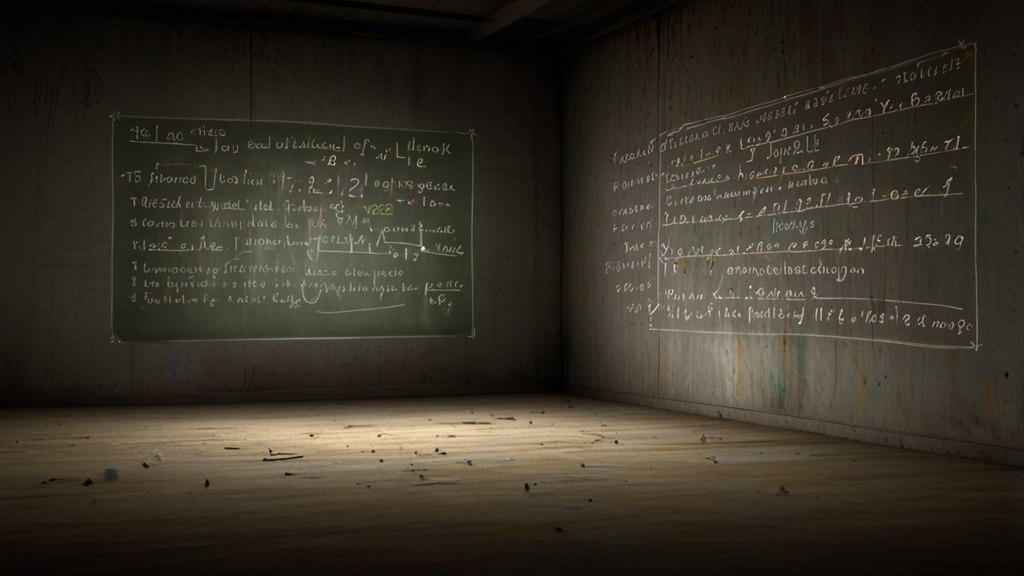Algebraic Mysteries: Discover What Your Teacher Never Taught You
Algebra is often presented as a series of rules and procedures to be memorized and applied. From solving for x in simple equations to mastering quadratic expressions, the structured curriculum leaves little room for exploring the deeper, more intriguing aspects of algebra. Yet, algebra holds many mysteries and elegant truths that go beyond the high school textbook. Let’s embark on a journey to uncover some of these hidden gems.
The Beauty of Symmetry
Symmetry is a fundamental concept that appears in various branches of mathematics, and algebra is no exception. One fascinating aspect is the symmetry of solutions in polynomial equations. Consider the quadratic equation ax2 + bx + c = 0. The solutions to this equation, found using the quadratic formula, reveal an inherent symmetry in their structure.
For any quadratic equation, the sum of the roots is equal to -b/a, and the product of the roots is equal to c/a.
This symmetry is not only elegant but also useful. It allows mathematicians to understand the relationships between the roots without explicitly solving the equation. Delving into this symmetry can provide deeper insights into the nature of algebraic solutions.
Imaginary Numbers: Unlocking New Dimensions
Imaginary numbers often bewilder students when first encountered. However, these numbers open a whole new dimension in algebraic thinking. The imaginary unit i is defined as the square root of -1. While it may seem abstract, imaginary numbers have practical applications in various fields, including engineering and physics.
One interesting property of imaginary numbers is how they interact with polynomials. For example, the polynomial equation x2 + 1 = 0 has no real solutions, but it has two imaginary solutions, i and -i. Imaginary numbers are also crucial in understanding the complex plane, where real and imaginary numbers combine to form complex numbers.
Imaginary numbers are not just abstract constructs; they are essential tools in understanding oscillations, wave functions, and electrical circuits.
The Power of Factorization
Factorizing algebraic expressions is more than just a method to simplify equations; it’s a powerful tool that reveals underlying structures. For instance, recognizing that a complex expression can be factored into simpler components can unveil hidden relationships and solutions.
Consider the equation x3 - 1 = 0. At first glance, it may seem daunting. However, by recognizing it can be factored as (x - 1)(x2 + x + 1) = 0, we expose the simpler equations: x - 1 = 0 and x2 + x + 1 = 0. This factorization not only makes the problem more approachable but also reveals more about the nature of the original equation.
Exploring Higher Dimensions
Algebra doesn’t confine itself to the two-dimensional plane of real and imaginary numbers. Higher-dimensional spaces, formed by vectors and matrices, extend algebraic thinking into new realms. In these spaces, concepts like linear transformations and eigenvalues can describe complex systems succinctly and elegantly.
Understanding these higher dimensions is crucial in modern fields such as data science, computer graphics, and physics. Matrices, for example, can represent transformations that rotate, scale, or skew objects in space. Eigenvalues and eigenvectors provide insights into the stability and behavior of dynamic systems.
In the world of higher-dimensional algebra, vectors and matrices are the building blocks that enable us to navigate and manipulate complex systems.
Conclusion: Embracing Algebraic Mysteries
Algebra is far more than a set of rules and methods for solving equations. It’s a rich, dynamic field filled with symmetry, higher dimensions, and a blend of the real and imaginary. Exploring these deeper aspects of algebra can not only enhance understanding but also ignite a passion for the beauty and elegance of mathematics.
So next time you encounter an algebraic equation, remember that it may hold more than just a numerical solution. It could be a gateway to discovering algebraic mysteries that your teacher never taught you.









